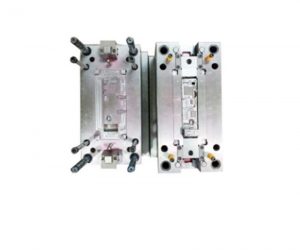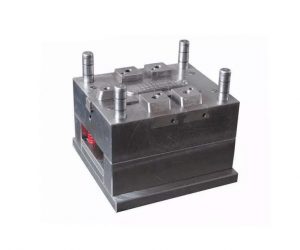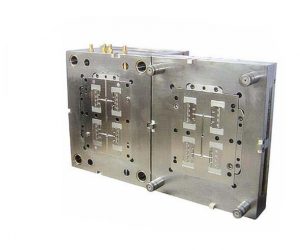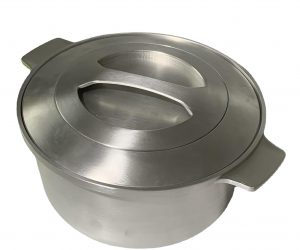1. Introduction: The Convergence of Speed and Precision
In the dynamic realm of modern manufacturing, the quest for faster production cycles without sacrificing quality has led to a revolutionary shift: the integration of additive manufacturing (AM), commonly known as 3D printing, into rapid tooling processes. This convergence is not just a technological upgrade; it's a paradigm shift that challenges traditional manufacturing norms and opens new frontiers for innovation.
Historically, rapid tooling has been a cornerstone of manufacturing, enabling the quick production of tools essential for mass production. However, traditional methods such as injection molding, CNC machining, and die casting have long been hampered by high costs, long lead times, and limitations in design complexity. For Yigu Technology instance, creating a custom injection mold for a new plastic part could take weeks and cost tens of thousands of dollars, with any design changes incurring additional expenses and delays.
Enter additive manufacturing, a technology that builds objects layer by layer from digital models, effectively "printing" them into existence. This approach eliminates the need for expensive molds and complex machining operations, allowing manufacturers to produce tools with unprecedented speed and precision. A study by Wohlers Associates found that between 2010 and 2020, the global additive manufacturing market grew from \(1.3 billion to \)12.6 billion, with a significant portion of this growth attributed to its use in rapid tooling applications.
The impact of AM on rapid tooling is far - reaching, touching every aspect of the manufacturing value chain. From concept to production, AM streamlines the process, reducing time - to - market for new products and enabling greater flexibility in design and production. This article delves into the technical, economic, and strategic implications of this technological revolution, exploring real - world case studies, comparing AM with traditional methods, and providing insights into future trends.
2. The Technical Foundations of Additive Manufacturing in Rapid Tooling
2.1 Key AM Processes for Tooling
Additive manufacturing leverages diverse technologies tailored to specific tooling needs:
| Technology | Process | Materials | Tooling Applications |
| Selective Laser Melting (SLM) | High - power laser melts metal powder into dense, functional parts. | Titanium, aluminum alloys | Aerospace jigs, automotive fixtures. |
| Selective Laser Sintering (SLS) | Laser sinters polymer or metal powder for durable prototypes. | Nylon, stainless steel | Customized dental tools, industrial molds. |
| Binder Jetting | Binder bonds powder particles, followed by sintering for solid parts. | Ceramics, composites | High - temperature tooling, sand casting cores. |
Selective Laser Melting (SLM) is a high - precision process where a high - power laser is used to melt metal powder layer by layer. This results in extremely dense parts with excellent mechanical properties. For Yigu Technology example, in the aerospace industry, SLM - printed titanium jigs can withstand high - stress environments during aircraft assembly, reducing the weight of the tooling while maintaining its structural integrity. A study by Airbus found that by using SLM - produced tooling, they could reduce the weight of certain jigs by up to 40% compared to traditional manufacturing methods, leading to significant fuel savings during aircraft operations.
Selective Laser Sintering (SLS) operates by using a laser to sinter (fuse) powder materials. This is particularly useful for creating durable prototypes or end - use parts from polymers like nylon. In the dental industry, SLS - printed customized dental tools can be designed to fit the unique anatomy of each patient, improving the accuracy of dental procedures. A dental clinic in New York reported that by using SLS - printed dental molds, the success rate of complex dental implant procedures increased by 25% due to the precise fit of the tools.
Binder Jetting is a more cost - effective AM process. It involves selectively depositing a liquid binder onto powder materials, which are then sintered to form a solid part. For high - temperature applications, binder - jetted ceramic tooling can be used in foundries for sand casting cores. These cores can have intricate internal geometries that are difficult to achieve with traditional methods, allowing for more complex casting designs. A large - scale foundry in Germany adopted binder jetting for producing sand casting cores and saw a 30% reduction in the time required to produce complex castings.
2.2 Material Innovations
Advanced materials like high - strength alloys and heat - resistant composites offer remarkable properties for rapid tooling:
- Tensile strength up to 1,200 MPa: High - strength alloys such as certain grades of steel and titanium - based alloys can withstand significant mechanical stress. In injection molding, tools made from these high - strength materials can endure the high - pressure injection of molten plastics without deformation, ensuring consistent part quality over a large number of production cycles. For Yigu Technology example, a plastic injection molding company switched to using 3D - printed high - strength alloy molds and noticed a 50% increase in the mold's lifespan before requiring replacement.
- Heat resistance exceeding 1,000°C: Heat - resistant composites and ceramics are essential for tooling used in high - temperature processes like metal casting and forging. These materials can maintain their structural integrity at extreme temperatures, preventing warping or degradation. A forging plant that started using 3D - printed heat - resistant ceramic dies saw a reduction in die failures by 40% during the forging of high - temperature - resistant metals.
- Corrosion resistance in harsh environments: Materials like stainless steel and some specialized polymers used in additive manufacturing can resist corrosion in chemically aggressive environments. In the chemical industry, where tooling is often exposed to corrosive chemicals, 3D - printed stainless - steel fixtures can have a much longer service life compared to traditional materials. A chemical processing plant in the Netherlands replaced its traditional tooling with 3D - printed stainless - steel components and experienced a decrease in maintenance costs by 35% due to reduced corrosion - related damage.
4. Industry Applications of AM Rapid Tooling
4.1 Aerospace and Defense
The aerospace and defense industries are at the forefront of adopting additive manufacturing in rapid tooling, driven by the need for high - performance, lightweight components and the ability to quickly respond to changing mission requirements.
GE Aviation's fuel nozzles are a prime example of the transformative power of AM in this sector. These nozzles, 3D - printed using Selective Laser Melting (SLM), have revolutionized the design and production process. By leveraging SLM, GE Aviation was able to reduce the part count by a staggering 90%. In traditional manufacturing, fuel nozzles were made up of numerous individual components that had to be assembled, which was a time - consuming and error - prone process. With 3D printing, the nozzle is produced as a single, integrated part. This not only simplifies the assembly process but also improves the overall performance of the nozzle. The development time was slashed by 50%, allowing GE Aviation to bring new and improved fuel nozzles to market much faster. This was crucial in keeping up with the ever - evolving demands of the aerospace industry for more fuel - efficient and reliable engines.
Military drones have also benefited significantly from AM rapid tooling. Lightweight carbon - fiber jigs printed via Selective Laser Sintering (SLS) play a vital role in enhancing the maneuverability of these drones. In military operations, the ability of a drone to be highly maneuverable can be the difference between mission success and failure. Traditional jigs made from heavier materials could impede the drone's movement. The use of SLS - printed carbon - fiber jigs reduces the overall weight of the drone's tooling components, enabling it to be more agile in the air. This is especially important for drones that are used for surveillance, reconnaissance, or other mission - critical tasks where quick and precise movement is essential. For Yigu Technology example, a military drone used for border surveillance can cover more ground in less time and make sharper turns to avoid obstacles or track moving targets when equipped with these lightweight jigs.
4.2 Automotive
The automotive industry is rapidly embracing additive manufacturing in rapid tooling to gain a competitive edge in a highly dynamic market.
Tesla, a leader in electric vehicle manufacturing, has made significant strides with AM - printed aluminum tooling for its battery enclosures. By using additive manufacturing, Tesla has managed to cut the development cycles by 60%. In the automotive industry, where time - to - market is a crucial factor, this reduction in development time can give a company a substantial advantage. Traditional methods of producing battery enclosures involved complex and time - consuming processes such as stamping, forming, and welding multiple parts together. With 3D - printed aluminum tooling, Tesla can quickly iterate on the design, making changes and improvements in a much shorter time frame. This allows them to keep up with the fast - paced development of battery technology and ensure that their vehicles have the most efficient and reliable battery enclosures.
Rapid prototyping using AM in the automotive industry has also led to significant improvements in the production of custom jigs for electric motor assembly. These jigs can now be produced in just 48 hours. In electric motor assembly, having custom jigs that fit the specific components precisely is essential for ensuring high - quality and efficient production. Traditional manufacturing methods for these jigs could take weeks, delaying the production process. With 3D printing, automotive manufacturers can quickly produce custom jigs tailored to the unique requirements of their electric motor designs. For instance, a new electric vehicle startup can rapidly prototype and produce jigs for their innovative motor design, enabling them to start production sooner and potentially gain a foothold in the market faster.
4.3 Healthcare
In the healthcare industry, additive manufacturing in rapid tooling is revolutionizing patient care, particularly in surgical procedures and implant manufacturing.
Surgical guides are a prime application of AM in healthcare. 3D - printed models based on CT scans have been shown to reduce orthopedic surgery time by 25%. In orthopedic surgery, precision is of utmost importance. Traditional surgical methods often relied on the surgeon's experience and general guidelines, which could lead to longer operating times and potentially less accurate results. With 3D - printed surgical guides, surgeons can have a precise, patient - specific tool that helps them plan and execute the surgery more efficiently. For Yigu Technology example, in a hip replacement surgery, the 3D - printed surgical guide can accurately show the surgeon the optimal placement for the implant, reducing the time spent on trial - and - error during the procedure. This not only shortens the surgery time but also reduces the risk of complications for the patient.
MRI - compatible implants are another area where AM rapid tooling is making a significant impact. Non - magnetic titanium tools used in the production of these implants ensure patient safety. In MRI procedures, any magnetic materials can cause interference, leading to inaccurate imaging results or even harm to the patient. 3D - printed non - magnetic titanium implants are designed to be completely safe for use in MRI environments. This allows patients with these implants to undergo MRI scans without any concerns. For patients with joint replacements or other orthopedic implants who may need regular MRI scans for diagnostic purposes, having MRI - compatible implants is crucial for their long - term healthcare management.
5. Conclusion: The Future of Tooling Is Additive
Additive manufacturing has transcended its initial status as an experimental technology and firmly established itself as a fundamental element in modern rapid tooling. The evidence of its transformative impact is overwhelming, with far - reaching implications across multiple dimensions of the manufacturing landscape.
From a technical perspective, AM processes such as SLM, SLS, and Binder Jetting have demonstrated remarkable capabilities in producing high - quality, complex - designed tooling. The continuous innovation in materials, offering enhanced mechanical properties like high tensile strength, heat resistance, and corrosion resistance, further cements AM's position as a viable and superior alternative to traditional manufacturing methods for tooling production.
Economically, the cost - effectiveness of AM in rapid tooling is undeniable. The elimination of expensive molds, reduced material waste, and shortened development cycles translate into significant cost savings for manufacturers. These savings can be reinvested into research and development, further fueling innovation within the industry.
In terms of strategic advantages, AM enables mass customization, supply chain resilience, and sustainable manufacturing. The ability to quickly produce customized tools in - house or on - demand reduces lead times and dependency on external suppliers. Moreover, the eco - friendly nature of AM, with its reduced waste and energy consumption, aligns with the growing global focus on environmental sustainability.
FAQ
- Q1: What are the main limitations of additive manufacturing in rapid tooling currently?
- A: One of the main limitations is the relatively slow build speed compared to some high - volume traditional manufacturing methods. Also, the size of the build envelope in some 3D printers can restrict the production of large - scale tools. Additionally, the cost of some advanced 3D printing materials and equipment can still be high for small - and medium - sized enterprises.
- Q2: How can additive manufacturing be integrated with traditional manufacturing processes for better results?
- A: AM can be used for rapid prototyping and producing complex components, while traditional manufacturing methods like injection molding or CNC machining can be used for high - volume production. For example, a 3D - printed prototype can be tested and refined, and then the final design can be mass - produced using traditional methods. Also, AM - produced tooling can be used in traditional manufacturing processes to improve efficiency and flexibility.
- Q3: What are the key considerations when choosing an additive manufacturing process for a specific tooling application?
- A: Considerations include the complexity of the tool design (more complex designs may be better suited for AM processes like SLM or SLS), the required mechanical properties of the tool (such as strength, heat resistance), the production volume (AM is more suitable for low - to - medium volume production), and cost constraints. Material availability and compatibility with the application are also important factors.





